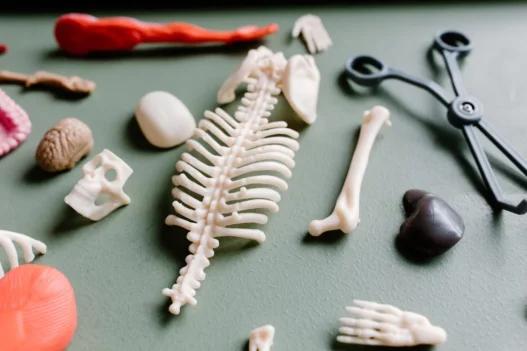The procedure 0HHT81Z involves the insertion of a radioactive element into the right breast through a natural or artificial opening using an endoscopic approach, typically for diagnostic or therapeutic purposes. This technique allows for precise targeting of the affected area while minimizing damage to surrounding tissue.
Table of Contents:
- 🔎 Clinical Indication
- 📋 Preparation
- 📖 Methodology
- 🩹 Recovery
- 🚨 Complexity & Risk
- 🔀 Similar Procedures
🔎 Clinical Indication
Insertion of a radioactive element into the right breast, whether through a natural or artificial opening like an endoscope, may be performed in order to target and treat localized breast cancer cells. This procedure, known as brachytherapy, allows for precise delivery of radiation therapy directly to the tumor site, minimizing damage to surrounding healthy tissue.
By utilizing a radioactive element in this targeted approach, clinicians can effectively kill cancer cells and reduce the risk of recurrence, while also potentially sparing patients from the side effects associated with traditional external beam radiation therapy. This method may be recommended for patients with early-stage breast cancer who are seeking a less invasive treatment option with fewer systemic side effects.
Overall, insertion of a radioactive element into the right breast via endoscopic means offers a tailored treatment approach that aims to maximize the therapeutic benefits of radiation therapy while minimizing the impact on the patient’s quality of life. This innovative technique represents a promising advancement in the field of oncology, providing patients with a more personalized and effective treatment option for breast cancer.
📋 Preparation
Before undergoing the procedure 0HHT81Z, preparation is crucial. Patients will usually need to fast for a certain amount of time before the procedure to ensure accurate results and reduce the risk of complications.
In addition to fasting, the patient may also need to stop taking certain medications or supplements that could interfere with the procedure. It is essential to follow the doctor’s instructions carefully to ensure a successful and safe procedure.
Lastly, patients may be required to undergo various tests or screenings before 0HHT81Z to assess their overall health and determine if they are good candidates for the procedure. This preparation is vital in ensuring the best possible outcome for the patient.
📖 Methodology
During 0HHT81Z, a radioactive element is inserted into the right breast through a natural or artificial opening using an endoscopic procedure. This is often done to specifically target and treat cancerous cells in the breast, while minimizing damage to surrounding healthy tissue.
The radioactive element emits radiation that can destroy cancer cells, ultimately helping to shrink or eliminate the tumor. The procedure is carefully monitored to ensure precise placement of the element and minimize potential side effects.
Overall, the insertion of a radioactive element into the right breast during 0HHT81Z is a targeted approach to treating breast cancer, with the goal of improving outcomes and reducing the need for more invasive treatments.
🩹 Recovery
After the insertion of the radioactive element into the right breast, the patient is closely monitored for any adverse reactions or side effects. This is to ensure that the treatment is effective and that the patient is recovering well.
Doctors will provide post-procedure care instructions, which may include rest, pain management, and follow-up appointments for monitoring. It is important for the patient to follow these instructions carefully to support the recovery process and optimize the outcome of the procedure.
🚨 Complexity & Risk
Performing 0HHT81Z, or the insertion of a radioactive element into the right breast via natural or artificial opening endoscopic, is a complex procedure that involves precision and expertise. The process requires careful navigation through tiny openings within the breast tissue to deliver the radioactive material to its intended location.
Patients undergoing this procedure may face potential risks, such as infection, bleeding, or damage to surrounding tissues. These risks highlight the importance of thorough preoperative evaluations and discussions with healthcare providers to weigh the benefits and risks of the procedure. It is crucial for patients to be well-informed and prepared for the potential outcomes of 0HHT81Z to make informed decisions about their healthcare.
🔀 Similar Procedures
Another medical procedure that is similar to insertion of a radioactive element into the breast is sentinel lymph node biopsy. This procedure involves the removal and examination of the first lymph node(s) that cancer cells are likely to spread to from a primary tumor.
Sentinel lymph node biopsy is often performed in cases of breast cancer to determine the stage of the disease and guide treatment decisions. By identifying the sentinel lymph node, doctors can assess whether cancer has spread beyond the breast and into the lymphatic system.
Both procedures play a crucial role in the diagnosis and staging of breast cancer, helping doctors determine the extent of the disease and plan the most effective treatment strategy for each patient. Sentinel lymph node biopsy, like the insertion of a radioactive element into the breast, is a key tool in the fight against breast cancer.

